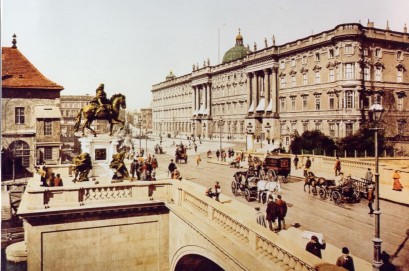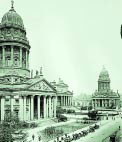WHY WAS THE ENSEMBLE IN THE CENTER OF BERLIN DESCRIBED AS A “TOTAL ART WORK”?
In accordance with the architectural principles of Vitruvius and Palladio, the interaction of the major edifices in the center of Berlin, arising out of the individual buildings from various centuries, created an exciting and yet extraordinarily harmonious ensemble.
“Architecture does not limit itself to single buildings as islands of elite taste, it requires the shaping of interaction with the cityscape as an entirety. Architects and landscapists can produce this totality, which is more than the sum of its parts, if they work together.”
(Prof. Volkwin Marg, architect, in “Building in Accordance with Nature – the Heritage of Palladio in Northern Europe”)
 Deutsch
Deutsch English
English Francais
Francais









